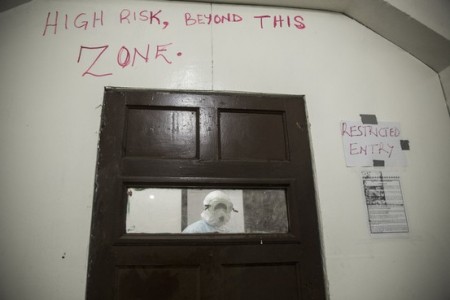It’s fascinating to watch the Ebola scare unfold with the minute-to-minute news coverage. The disease that has killed thousands in West Africa and now has its first case in the U.S. It is a case study in how quickly disease can spread throughout the world with air travel. Officially, the WHO has declared the outbreak to be a “Public Health Emergency of International Concern.”
It is also an example of how the media can deliberately scare the public. News reports have shouted out that this highly fatal disease has hit the U.S. The early reports did not explain why Ebola is spreading rapidly in Africa and that it would not be the same in the U.S. The biggest reasons for the epidemic have to do with the health system in Africa and its inability to isolate and quarantine infected individuals. Another reason is cultural. Burial ceremonies in which the mourners have direct contact with the deceased person may also become infected.
The World Health Organization estimates that as many as 1.4 million people may be infected by January. Seventy percent of the individuals who have Ebola need to be in a treatment center or facility that prevents transmission in order to slow the spread of the disease in Liberia, Sierra Leone and Guinea.
The U.S. is building facilities to test and treat Ebola in West Africa. But treatment centers can’t open without trained staff to operate them. Another primary issue is the lack of skilled health workers. Foreign workers have been slow to arrive to fill the gap. Training doctors and health workers cannot scale fast enough to meet the 9,000 to 10,000 needed to staff the thousands of beds that are being built in Liberia. This is in spite of the fact that there are many unemployed locals who are seeking work. Many have applied for jobs to care for Ebola patients and are willing to risk their lives.
The Centers for Disease Control and Prevention, experts in epidemiology, provide advice and direct assistance to the Texas hospital in tracking down the 100 people who had contact with the infected man or his family, which is important to limiting the spread of disease. All this for one infected person. The multiplier would be exponential if they were to trace the contacts of 25 infected people.
This is an eye opener and test of our healthcare system. Given the mistakes made by the Texas hospital, are hospitals and staff truly prepared and paying attention to everyone who walks through their emergency room doors? Are family practitioners on the alert for symptoms among patients who are in their waiting room? Does everyone who is on the frontline of patient care ask the simple question, “Have you traveled out of the country in the past 30 days?”
Asking the questions is half the battle. Paying attention to the answers could prevent an epidemic.



Leave A Comment
You must be logged in to post a comment.